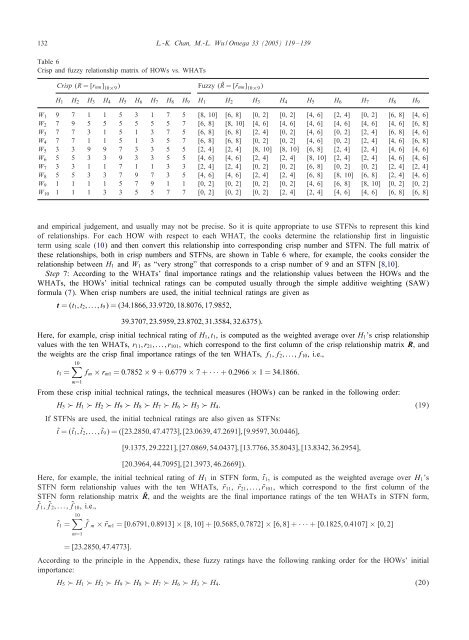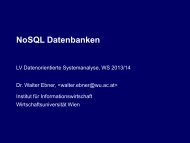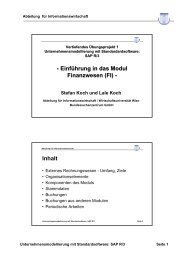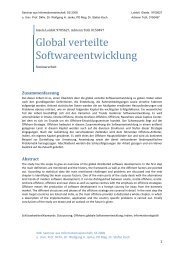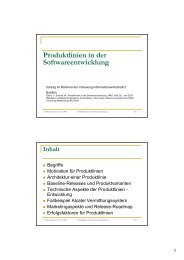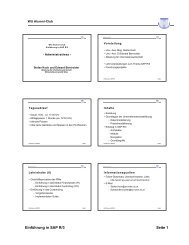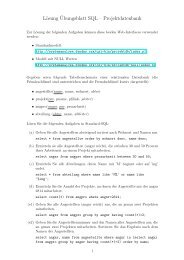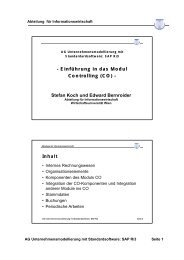A systematic approach to quality function deployment with a full ...
A systematic approach to quality function deployment with a full ...
A systematic approach to quality function deployment with a full ...
You also want an ePaper? Increase the reach of your titles
YUMPU automatically turns print PDFs into web optimized ePapers that Google loves.
132 L.-K. Chan, M.-L. Wu / Omega 33 (2005) 119 – 139<br />
Table 6<br />
Crisp and fuzzy relationship matrix of HOWs vs. WHATs<br />
Crisp (R =[rmn] 10×9 ) Fuzzy ( ˜R =[˜rmn] 10×9 )<br />
H1 H2 H3 H4 H5 H6 H7 H8 H9 H1 H2 H3 H4 H5 H6 H7 H8 H9<br />
W1 9 7 1 1 5 3 1 7 5 [8, 10] [6, 8] [0, 2] [0, 2] [4, 6] [2, 4] [0, 2] [6, 8] [4, 6]<br />
W2 7 9 5 5 5 5 5 5 7 [6, 8] [8, 10] [4, 6] [4, 6] [4, 6] [4, 6] [4, 6] [4, 6] [6, 8]<br />
W3 7 7 3 1 5 1 3 7 5 [6, 8] [6, 8] [2, 4] [0, 2] [4, 6] [0, 2] [2, 4] [6, 8] [4, 6]<br />
W4 7 7 1 1 5 1 3 5 7 [6, 8] [6, 8] [0, 2] [0, 2] [4, 6] [0, 2] [2, 4] [4, 6] [6, 8]<br />
W5 3 3 9 9 7 3 3 5 5 [2, 4] [2, 4] [8, 10] [8, 10] [6, 8] [2, 4] [2, 4] [4, 6] [4, 6]<br />
W6 5 5 3 3 9 3 3 5 5 [4, 6] [4, 6] [2, 4] [2, 4] [8, 10] [2, 4] [2, 4] [4, 6] [4, 6]<br />
W7 3 3 1 1 7 1 1 3 3 [2, 4] [2, 4] [0, 2] [0, 2] [6, 8] [0, 2] [0, 2] [2, 4] [2, 4]<br />
W8 5 5 3 3 7 9 7 3 5 [4, 6] [4, 6] [2, 4] [2, 4] [6, 8] [8, 10] [6, 8] [2, 4] [4, 6]<br />
W9 1 1 1 1 5 7 9 1 1 [0, 2] [0, 2] [0, 2] [0, 2] [4, 6] [6, 8] [8, 10] [0, 2] [0, 2]<br />
W10 1 1 1 3 3 5 5 7 7 [0, 2] [0, 2] [0, 2] [2, 4] [2, 4] [4, 6] [4, 6] [6, 8] [6, 8]<br />
and empirical judgement, and usually may not be precise. So it is quite appropriate <strong>to</strong> use STFNs <strong>to</strong> represent this kind<br />
of relationships. For each HOW <strong>with</strong> respect <strong>to</strong> each WHAT, the cooks determine the relationship rst in linguistic<br />
term using scale (10) and then convert this relationship in<strong>to</strong> corresponding crisp number and STFN. The <strong>full</strong> matrix of<br />
these relationships, both in crisp numbers and STFNs, are shown in Table 6 where, for example, the cooks consider the<br />
relationship between H1 and W1 as “very strong” that corresponds <strong>to</strong> a crisp number of 9 and an STFN [8,10].<br />
Step 7: According <strong>to</strong> the WHATs’ nal importance ratings and the relationship values between the HOWs and the<br />
WHATs, the HOWs’ initial technical ratings can be computed usually through the simple additive weighting (SAW)<br />
formula (7). When crisp numbers are used, the initial technical ratings are given as<br />
t =(t1;t2;:::;t9) = (34:1866; 33:9720; 18:8076; 17:9852;<br />
39:3707; 23:5959; 23:8702; 31:3584; 32:6375):<br />
Here, for example, crisp initial technical rating of H1;t1, is computed as the weighted average over H1’s crisp relationship<br />
values <strong>with</strong> the ten WHATs, r11;r21;:::;r101, which correspond <strong>to</strong> the rst column of the crisp relationship matrix R, and<br />
the weights are the crisp nal importance ratings of the ten WHATs, f1;f2;:::;f10, i.e.,<br />
�10<br />
t1 = fm × rm1 =0:7852 × 9+0:6779 × 7+···+0:2966 × 1=34:1866:<br />
m=1<br />
From these crisp initial technical ratings, the technical measures (HOWs) can be ranked in the following order:<br />
H5 ≻ H1 ≻ H2 ≻ H9 ≻ H8 ≻ H7 ≻ H6 ≻ H3 ≻ H4: (19)<br />
If STFNs are used, the initial technical ratings are also given as STFNs:<br />
˜t =(˜t1; ˜t2;:::;˜t9) = ([23:2850; 47:4773]; [23:0639; 47:2691]; [9:9597; 30:0446];<br />
[9:1375; 29:2221]; [27:0869; 54:0437]; [13:7766; 35:8043]; [13:8342; 36:2954];<br />
[20:3964; 44:7095]; [21:3973; 46:2669]):<br />
Here, for example, the initial technical rating of H1 in STFN form, ˜t1, is computed as the weighted average over H1’s<br />
STFN form relationship values <strong>with</strong> the ten WHATs, ˜r11, ˜r21;:::; ˜r101, which correspond <strong>to</strong> the rst column of the<br />
STFN form relationship matrix ˜R, and the weights are the nal importance ratings of the ten WHATs in STFN form,<br />
˜f1; ˜f2;:::; ˜f10, i.e.,<br />
�10<br />
˜t1 =<br />
m=1<br />
˜f m × ˜rm1 =[0:6791; 0:8913] × [8; 10]+[0:5685; 0:7872] × [6; 8] + ···+[0:1825; 0:4107] × [0; 2]<br />
= [23:2850; 47:4773]:<br />
According <strong>to</strong> the principle in the Appendix, these fuzzy ratings have the following ranking order for the HOWs’ initial<br />
importance:<br />
H5 ≻ H1 ≻ H2 ≻ H9 ≻ H8 ≻ H7 ≻ H6 ≻ H3 ≻ H4: (20)


